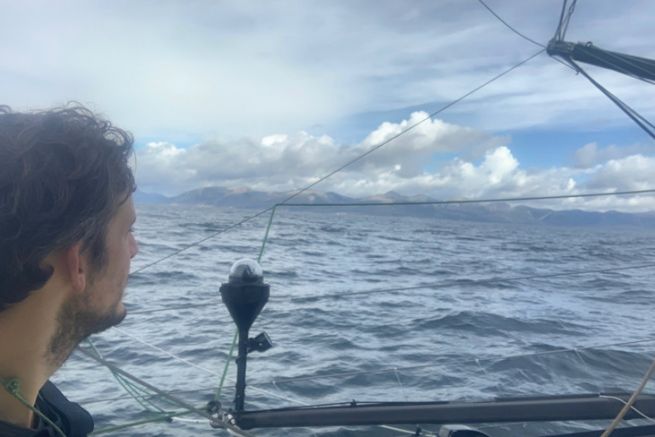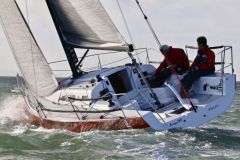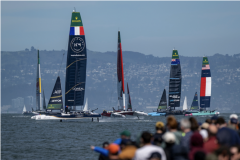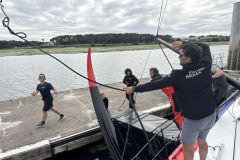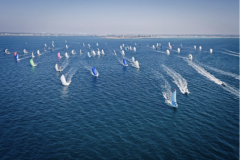Extreme latitude
Cape Horn is a 425 m high cliff located on an island 6 km long and 2 km wide. It is the southernmost southern point of South America, at the southern tip of Tierra del Fuego (the name of the archipelago at the southernmost tip of South America). It marks the northern limit of Drake Passage (the inlet separating South America from Antarctica).
It is the southernmost of all capes and its extreme latitude at 56° South makes it a dreaded cape. Flirting with the ice edge, it is also subject to strong winds and heavy seas.
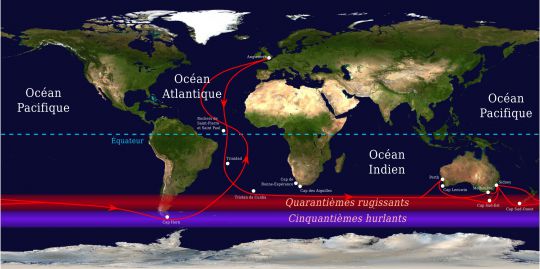
A bit of history
Although it was a compulsory passage for merchant ships from the 18th to the early 1900s, the dangerous nature of the route gave it a bad reputation. It was discovered in September 1578 by Sir Francis Drake, an English explorer and politician, who was on a round-the-world voyage. While sailing in the Pacific, violent winds pushed him south of Tierra del Fuego. He will then land on an island "three quarters of a degree more southerly than all the other isles." . But the ships continued to use the Strait of Magellan, which together with the Cape of Good Hope were the only two known routes at the time to reach the Far East.
It wasn't until 1616 that the "Kapp Hoorn" was officially christened "Kapp Hoorn". The Dutch merchant Jacob Le Maire was looking for another trade route to break the Dutch East India Company's monopoly of all Dutch merchant transport via the Strait of Magellan and Good Hope. So he embarked on an expedition in May 1615 with two ships.
But at that time, the famous cape was thought to be the southernmost point of Tierra del Fuego. Poor conditions had prevented a thorough search. It was not until 1624 that it was discovered that it was an island.
With the opening of the Panama and Suez Canal, commercial ships abandoned this dangerous passage. The Pamir was in fact the last commercial sailing ship (1949) to pass through for a crossing between Finland and Australia.
An essential part of major ocean races
The Cape Horn Passage is still one of the fastest sea routes to complete a round-the-world trip. In particular, it is one of the major crossing points of a circumnavigation despite its remoteness and the danger it represents. Many sailors consider it the culmination of their journey. And because of its harshness, it is compared to a climb up Everest.
First attempt at sailing around the world
The first attempt to round Cape Horn was made in 1911. The Pandora (11.20 m cutter), a replica of the Spray by Joshua Slocum ( first solo round-the-world trip ) is tackling the bypass around the tip of South America, but it was reportedly shipwrecked afterwards.
First sailing trip around the world
It is therefore Saoirse a 13 m long yacht, skippered by Conor O'Brien and his 3 friends who rounded Cape Horn for the first time during a circumnavigation of the world between 1923 and 1925. A navigation carried out by "quite wonderful weather".
First solo passage
The Norwegian Al Hansen rounded Cape Horn in 1934, but upside down (from east to west), on the Mary Jane. She ran aground on the Chilean coast shortly afterwards.
First single-handed circumnavigation of the world
In 1942, Vito Dumas rounded Cape Horn on his solo circumnavigation on his 10 m ketch, Lehg II, in 1942.
The smallest boat to round Cape Horn
The Ahodori II by Japanese Hiroshi Aoki, a 7 m long plywood yawl in 1974 and the Mini 6.50 Findomestic Banca (6.50 m) by Alessandro Di Benedetto on April 17, 2010
An essential course for water racing
Many ocean races are run along the old trade routes that used to pass through the Horn. The first was the Golden Globe Challenge in 1968 (whose replica, the Golden Globe Race has just been won in 2019 by Jean-Luc Van Den Heede).
Many others followed: Velux 5 Oceans (round-the-world tour with stopovers), the Vendée Globe (single-handed circumnavigation of the world), the Volvo Ocean Race (round-the-world tour with crewed stopovers).
Great challenges also lie ahead at Cape Horn: the Jules Verne Trophy (non-stop crewed round-the-world voyage), the Global Challenge (round-the-world voyage in reverse, from east to west) and the Saint-Exupéry Trophy, which rewards the fastest single-handed round-the-world voyage and is in the hands of François Gabart.

 /
/ 